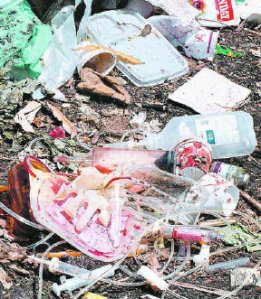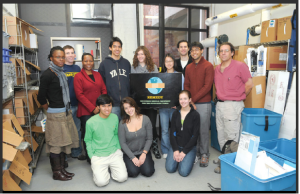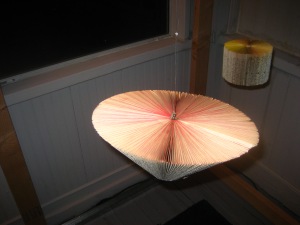While walking around the booths at the DC Green Fest a few weeks ago, I came across Zass Designs. Their innovative jewelry collection made from upcycled print media and plastics immediately caught my eye. Zass is the creative collaboration of mother-daughter design duo, Zulay and Stephanie Smith. Based in Raleigh, North Carolina, Zass Designs uses recycled printed materials and PET plastic bottles to create unique contemporary jewelry pieces.

Zass Designs
This mother daughter design duo, Zulay and Stephanie Smith have been making jewelry as a hobby for years, but began doing so professionally just a few years ago. In a stroke of genius while cleaning out their studio ( they are both graphic designers) one day, they realized that the pile of old prints they were feeling guilty about throwing away could make an excellent raw material for jewelry. Zulay, the Mom of the mother daughter duo, says ” we found ourselves thinking on how we could recycle (well actually upcycle) these printed material into something unique, wearable and lasting; something that one would cherish for many years to come, and of course keep it from our landfills.” It all started with a few simple pieces made as gifts for family and friends, but once they found themselves fulfilling countless requests on every birthday and holiday they decided to create Zass Designs.
Now, they have developed a collection made entirely of recycled materials. Their prints are all salvaged, including everything from old maps, concert tickets and calenders to junk mail cards and paper samples from distributors. Their plastics are virtually all from recycled bottles, which they collect from neighbors and local restaurants. They’ll even offer client’s discounts in exchange for fun colored plastic bottles.
The rich histories of their pieces’ past lives as newspapers, calenders and soda bottles, adds a whole new level of individuality to Zass’s hand crafted jewelry.
In talking to them it was clear to me that their art was driven by their principles. Again Zulay says that “from the beginning, we’ve been driven to do something worthwhile professionally and creatively, but above all, to do something that inspires us personally following the eco-design fundamental principles: reduce, reuse, recycle.”
They have even taken their recycled art one step further by creating their own recycled gift and storage bags to reduce packing waste. Using pages from a local fashion magazine called Skirt they make gift bags for customers to take home purchases. They also use recycled felt to make “jewelry wraps,” as carrying cases for their pieces. Holding three to four pieces of jewelry, these are perfect for travel.






